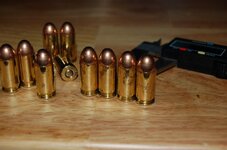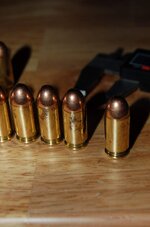- Messages
- 105
- Reactions
- 11
I bought about 1000+ 45 ACP brass from Leo Brass awhile back. After 5 hrs in the tumbler the stain that's on the brass is still on. I took a few out and try to scrub it with dawn and hot water to see if it will come off, still no luck. No matter what I try, nothing seems to work. About 1/5 of my brass are this way. Any idea why it looks this way? I never had a problem with factory rounds that are fired and clean. There doesn't seem to be any issues with loading or cycle in the gun, just cosmetics. Here's some pics:















